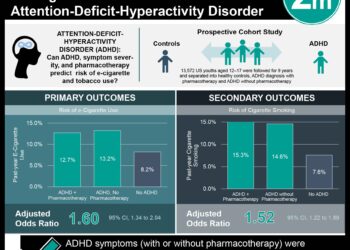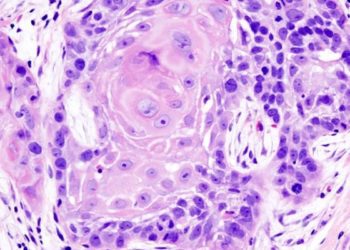The Scan by 2 Minute Medicine®: Tranquilizer Tales, Naloxone: Overturning Opioid Overdoses, Nicotine Nightmares, and Newly Approved Malaria Vaccine
5-2-2023
The Scan by 2 Minute Medicine® is a pop-culture medical newsletter and exclusive benefit for 2 Minute Medicine Plus subscribers.
Tranquilizer Tales
The Story: As the battle against drug abuse wages across the world, the entrance of a new drug poses a threat to communities. Xylazine, a drug initially intended for veterinary use, is making its way into recreational drugs across America and Canada.
What is Xylazine?
Xylazine is a drug commonly used as a veterinary tranquilizer and is not safe for human use. Like many other drugs, xylazine is a central nervous system depressant. It acts upon alpha-2 adrenergic receptors in the central nervous system, to reduce the stimulation of nerves. This results in many characteristic symptoms such as a feeling of calm, drowsiness, amnesia, and sedative-like effects. It may also reduce blood pressure, heart rate, and breathing rate to dangerous levels, resulting in overdoses. Due to its central nervous system effects, xylazine can also prolong the high felt by other drugs.
The Dangers of Xylazine:
Xylazine is especially dangerous because it is being combined with other street drugs, leading to unknowing consumption and overdosing. Due to the extreme danger posed by this contaminant, the Biden administration designated xylazine as an emerging threat in the US. This sentiment was echoed by the state of Pennsylvania, where xylazine is being designated as a controlled substance. This latest designation will allow law enforcement to tighten regulations around this drug’s distribution, and use. In Canada, Xylazine was detected in at least 8 provinces and 1 territory during 2022, a 950% increase in detection over a period of three years. Ensuring proper control and management of this dangerous drug will be paramount to ensuring the safety of individuals across the globe.
Naloxone: Overturning Opioid Overdoses
The FDA has recently approved the use of Narcan, for over-the-counter use. Narcan, also known as naloxone, is a vital drug that can treat opioid overdoses in seconds.
Opioids are a class of drugs that are often used for pain relief, but unfortunately they can also be highly addictive and deadly if used improperly. Morphine, heroin, and codeine are all opioids. Opioids work by binding to the opioid receptors in the brain, which reduces the sensation of pain amongst other effects. Once they bind, opioids can reduce brain function and contribute to drowsiness. Opioids are also particularly addictive due to their activation of the brain’s reward pathways. Once the body becomes dependent on opioids, then withdrawal becomes a challenge, where individuals may experience extreme symptoms as a result of not consuming opioids. In situations of overdose, the large amounts of opioids in the brain can diminish breathing, which eventually leads to death. That’s why we need a solution in cases of emergency.
Naloxone is that solution. Naloxone is a drug that works by binding to the opioid receptor without activating it. It is known as an opioid receptor antagonist. When administered in case of an overdose, it rapidly displaces the opioid from its binding site and can relieve the symptoms of overdose. It’s also convenient to administer, as it is administered as a nasal spray. It is safe, and accessible now that it has been approved for over-the-counter use. Of course, it’s important to remember that naloxone is not a cure for opioids, it only temporarily displaces the opioids from its binding site, and so repeat administrations may be necessary until emergency care arrives. This latest move by the FDA to help curb opioid addiction, is a big step forward in addressing the opioid crisis in the USA.
Nicotine Nightmares
Though smoking rates are declining rapidly, the use of electronic cigarettes, also known as vapes, has taken the world by storm. Juul Labs, a prominent E-cigarette manufacturer, has recently reached a $462 million settlement with 7 US states. These states issued lawsuits claiming that the company began a vape usage crisis, as a result of a marketing campaign directed towards young people. By employing tactics such as free distribution of E-cigarettes at popular events, these states claim that Juul knowingly started an issue leading to rising adolescent vaping rates.
A large part of this problem, is that vape products contain nicotine. Nicotine is a drug that can create a temporary feeling of alertness, relaxation, and happiness. It also elevates levels of dopamine, a chemical that is linked to the brain’s reward processing system. This contributes to the highly addictive nature of nicotine. Juul e-cigarettes have particularly high levels of nicotine, which is dangerous because it promotes addiction, progression to cigarette use, and can alter the process of memory formation in adolescent brains. That’s why its so important to ensure that e-cigarettes aren’t unfairly marketed towards young people!
It’s not only the nicotine that is a concern of vaping, inhalation of toxic chemicals used in flavoring, can contribute to significant lung injuries and infections. One particular condition that may develop, is bronchiolitis obliterans, also referred to as popcorn lung. This was discovered in individuals working in popcorn factories, who developed this disease as a result of exposure to a chemical called diacetyl. Diacetyl is often a component of liquids in E-cigarettes, as it provides flavor enhancement. When chronically consumed however, diacetyl can lead to permanent destruction of the bronchioles, a vital component of the lungs. Once popcorn lung sets in, there is no lasting treatment other than symptom alleviation. In addition to popcorn lung, it is possible for pneumonia, and lung collapses to occur as a result of vape use. As smoking rates decline, it is important to ensure that smoking substitutes, such as e-cigarettes, are controlled and not unfairly marketed towards impressionable adolescents.
Newly Approved Malaria Vaccine
In an unprecedented move, Ghana became the first country in the world to approve a new Malaria vaccine, the R21 Matrix-M vaccine. Scientists from the University of Oxford have developed a vaccine with extreme potential, demonstrating high efficacy against malaria with a 3-dose regimen of vaccination. Many of us have heard about malaria, but what exactly is this disease?
Malaria is an illness caused by the parasite Plasmodium falciparum, and is commonly transmitted through mosquitoes. Upon infection by the mosquito, the parasites invade red blood cells, and multiply until the red blood cell bursts. This releases more parasites into the blood, and the cycle continues. Due to the loss of red blood cells, symptoms include feeling weak, fever, chills, muscle aches, and jaundice. Around the world, over 200 million cases of malaria are estimated, with over 600,000 deaths. Most of these deaths were in Africa, specifically in children under the age of 5. For this reason, it is critical for countries in Africa to receive a vaccine that will allow their children to remain safe from this disease.
Because of the complex life cycle of this parasite, targeting the parasite is very difficult. This breakthrough R21/Matrix-M vaccine works by introducing some of the parasitic proteins into the body, without the danger of infection. By including some of these proteins, the body can develop defenses, known as antibodies, against these proteins, so upon infection by the parasite, the body is prepared to launch an attack against the invader. In populations given this vaccine, there has been a favorable safety profile, and great effectiveness at preventing serious disease. If we vaccinate vulnerable people, we can protect them from the devastating consequences of malaria. This vaccine represents a very promising foray into preventing this deadly illness which claims the lives of hundreds of thousands worldwide and brings mankind one step closer to eradicating malaria.
©2023 2 Minute Medicine, Inc. All rights reserved. No works may be reproduced without expressed written consent from 2 Minute Medicine, Inc. Inquire about licensing here. No article should be construed as medical advice and is not intended as such by the authors or by 2 Minute Medicine, Inc






